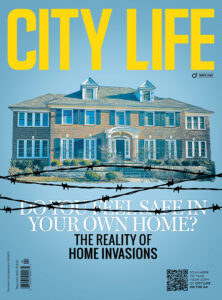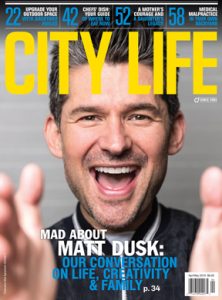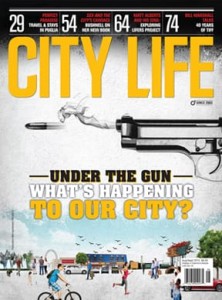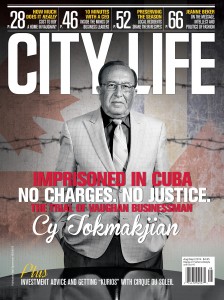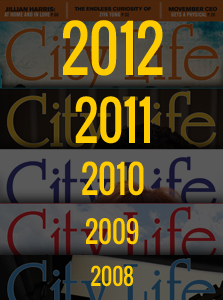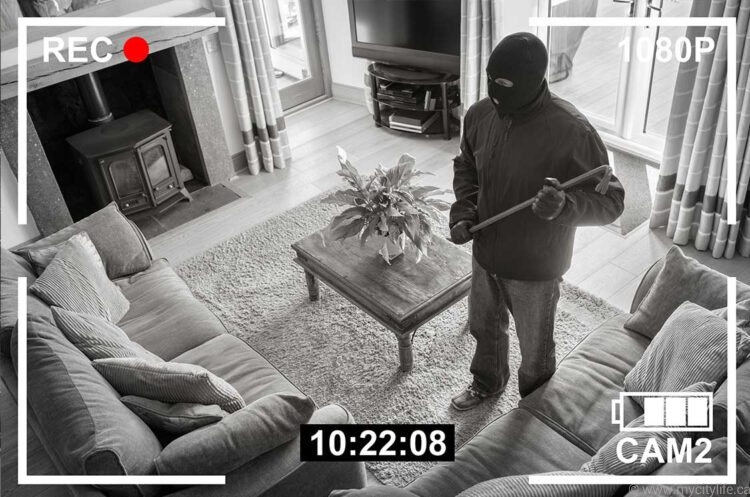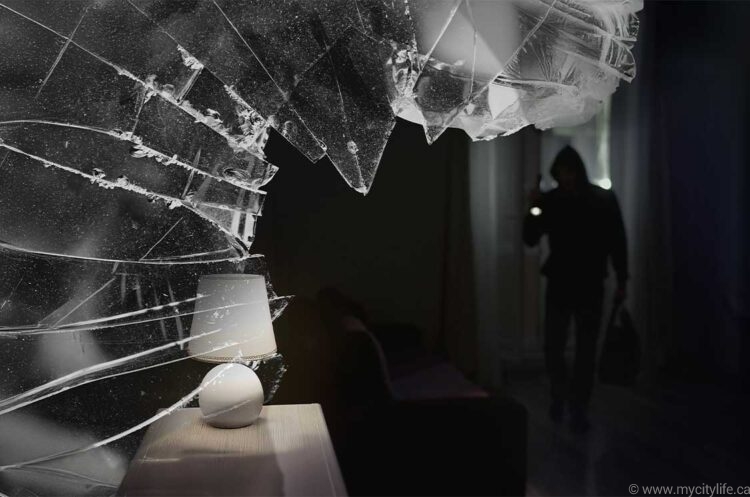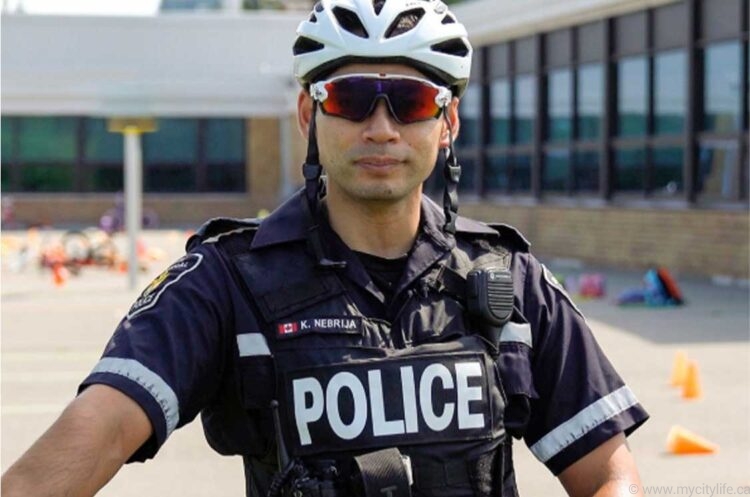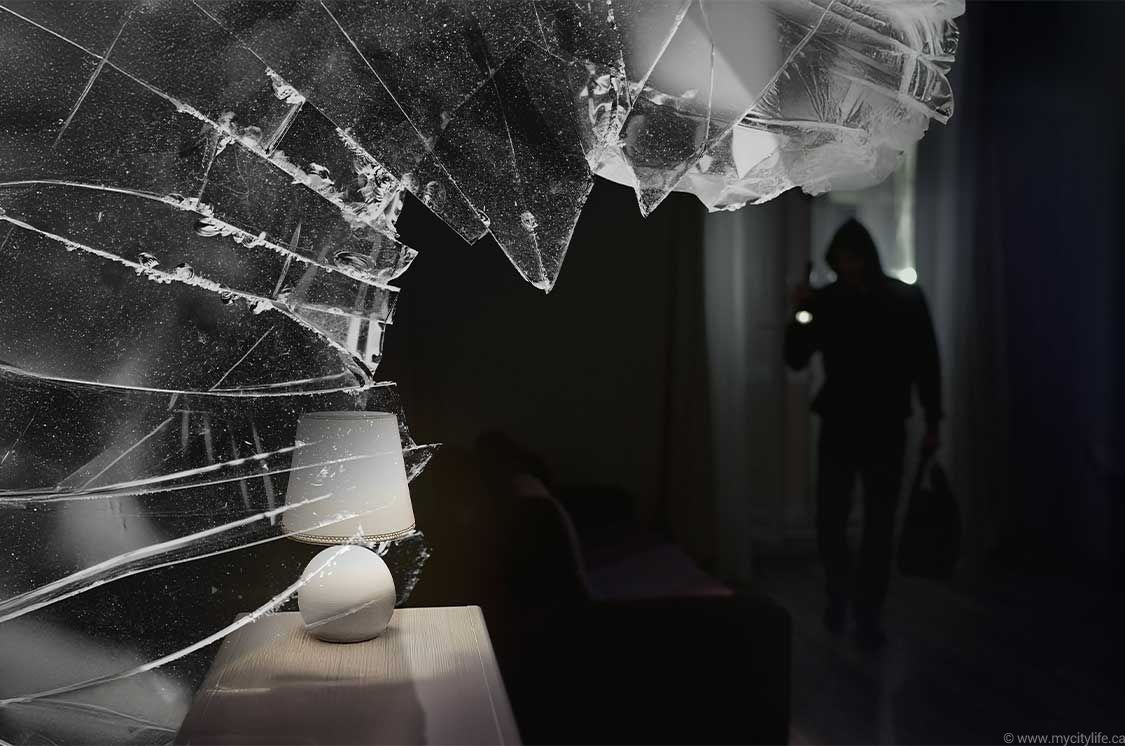Safe Haven No More: The Reality Of Home Invasions!
With the recent onslaught of home invasions, the safety and sanctity of our homes are being violated.
Crash. Bash. Kick. Assault. Their actions are so brazen that you feel compelled to watch the videos over and over again to confirm that what you are seeing is really happening in your neighbourhood.
For or a certain segment of the criminal population, it seems that home invasions have become the modus operandi for procuring the luxury items that their victims have worked so hard for. Indeed, in a spate of recent home invasions in Vaughan the homeowners’ security cameras bore witness to the bold-faced and cavalier way in which groups of four or five men approach a house. Camouflaged head to toe in dark pants, oversized hoodies and white gloves, the culprits sauntered up the wide brick driveways like they were coming for a friendly late-night visit.
But imagine that it is you and your partner inside that house, jolted awake by the sound of your front door being booted and hammer-splintered apart so that someone can break in.The ferocity is so incomprehensible and the thunderous pounding of your heart so violent that it makes you wonder if you are having a heart attack. You grab your partner’s hand as you reach for the night light, then stop yourself a nanosecond before you do, instinctively realizing that if the intruders see it, they will know you are awake — and then what?
The phone! Where is your phone?
Quietly, ever so softly, you place your feet on the carpet and tiptoe over to the desk where your cell phone is charging, thanking both God and the Universe that 911 is an easy number to remember.
Trembling, you punch in the three numbers that you hope will save you before this nightmare escalates. Who knows what these intruders want and how far they will go to get it? Glass breaks and you hear things crashing. Each second feels like your last as you wait … wait … wait for the police to show up.
It is a horrific situation that none of us should ever have to worry about.
And while no one was hurt in one recent Vaughan home invasion, the suspects did escape with the family’s Range Rover, bashing through the garage door and then crashing through the front gate as they made their chaotic getaway.
Others have not been so lucky. In another recent home invasion in Vaughan an occupant was attacked with a hammer, and in a Toronto home invasion a few months ago, the male homeowner’s arm and hands were sliced so savagely that he will require tendon surgery.
When we the public see these attacks on social media we are alarmed, shocked and outraged. Yes we know they happen in other countries, but here in Canada? In our own communities and our own neighbourhoods? But it is no longer a “they” problem, it is an “us” problem, and people are demanding change, as evidenced by the thousands of views on YouTube of the Vaughan home invasions and the hundreds of scathing, blunt and pragmatic comments posted to them.
Emotions are running high people to feel that criminals have all the rights — if there is a national freeze in Canada on the sale or purchase of handguns, and newly acquired handguns cannot be brought into this country, why is it that criminals seem to have unfettered access to them?
People are appalled and terrified for their safety, to the point that many share the belief that we as homeowners need to fight back, that the tenet that “Our home is our castle” is a basic societal right — one that is not only being infringed but being violently torn apart by these gangs of perpetrators that attack in the dead of night. If someone breaks into our house and violates all we hold sacred, their intention is plainly to do harm. Some are suggesting that we arm ourselves as a means of protecting ourselves and our families — and that to do so is also a basic human right.
Others call for a change in government and an aggressive and drastic shift in attitude about how we treat convicted criminals. Their message is loud and clear — jail, not bail for repeat offenders — and that changes must be effected now.
The 1990 movie Home Alone featuring then-child star Macaulay Culkin had him protecting his home from two inept burglars after he’d been inadvertently left behind by his parents who’d gone away on Christmas vacation, and was sprinkled with whimsically humorous situations in which he created a series of ingenious booby traps to foil the bungling Joe Pesci and Daniel Stern characters. These memorably included a paint can falling on the burglars’ heads, a fire hose that sprayed them and other assorted at-the-ready household items that served as weapons to defy the intrusive burglars.
While the storylines of this movie and its many sequels were boisterously funny and charming, the reality of a home invasion is anything but. Certainly, one should not take the resolution of any such incident into one’s own hands — especially given the danger, volatility and unpredictability that is at play.
“If any incident occurs at your house, call 911 right away,” says Kevin Nebrija, Media Relations Officer with York Regional Police ( YRP). “Be the best witness you can be. I know it is a dynamic situation, but try to remember as much information, as many identifying factors as possible — what the perpetrators are wearing, if they have accents or use particular phrases, or if they use names with each other — no matter how big or small, these kinds of details help investigators.”
If the intruders have already entered the house and you are unable to call 911, Nebrija advises the following: “Co-operate with the intruders; it is difficult to know what a suspect will do to escalate the level of physical force to accomplish what they intend to do. In most cases, the suspects are committing the home invasion because they are looking for something specific, whether it is currency or jewelry. Whatever it might be, obtaining what they are looking for is really all they want.”
It is not hard to imagine how highly stressful being the target of a home invasion is. It’s an event that produces extraordinary levels of fear, anxiety, shock, and numbness, along with other after-the-fact psychological impacts, reactions that Nebrija himself has witnessed.
“When I was a patrol officer, I attended at a number of home invasions, but one in particular stands out for me. In 2017, at about 2 a.m., a call came in that a child was on the phone stating that someone was in their house. As another officer and I were on our way to the house we were getting updates from 911 call-takers, who were relaying the information to dispatchers that the caller was saying he heard footsteps coming up the stairs. At that point it hit me that the situation was moving quickly. As the officers and I got out of the car we heard people running through the backyard, with another officer in pursuit. The suspects jumped over an eight- foot fence with another officer and me in pursuit. Because they had a head start, they got away but were apprehended shortly thereafter by nearby officers. My partner and I went back into the house to speak with the victims — some were children — and I remember seeing the fear on their faces. No assault had occurred, but you can imagine that if several people break into your home at 2 a.m. it is going to be terrorizing. Just seeing the look on the victims’ faces, seeing what they had gone through, sticks out in my mind.”
Gillian Freeman, Executive Director of Victim Services of York Region, says that during home invasions victims experience “fight,” “flight,” “freeze” and “fawn” — the last of which happens when the person is negotiating during the situation.
“Whatever it might be, obtaining what they are looking for is really all they want.”
— Kevin Nebrija
“The cognitive impacts of a home invasion are significant,” Freeman says. “It wavers people’s beliefs and the way they think about people and the world overall; victims tend to look at people differently in every way. Often when victims think of the crime, they struggle with thoughts of wishing they could have done more or done less. And in a crisis, the cognitive parts of our brains are not operating — we go into survival mode and instinct, based on the information people can compute at that time.”
Along with these changes in thinking, Freeman says that major changes in behaviour also occur.“There is a new fear that sets in for victims of home invasions. People go to extremes: parents might not send their children to school or they may not go to work as they are afraid they may not be able to protect their family if they are separated. Suddenly, people realize they are vulnerable in everything they do. The flipside of this behaviour is some victims of home invasions adopt the opposite behaviour — they distance themselves from others so that they don’t feel that same emotional instability and worry.”
And when a child is involved, the impact of a home invasion can be even more devastating. “The child might assume a different view of the world than any other child,” Freeman says. “Their autonomic nervous systems can become activated like those of adults, based on what has ‘fired and wired,’ together during the incident, which could in turn cause behavioural responses. At Victim Services, we try to unpack situations where smells, sights, words, phrases, and different memories get fired and wired together so that a person can be aware of them,” can minimize those things and eventually rewire the associative process.
In her 23 years with Victim Services, Freeman states that there has been more than one home invasion where a homicide was committed with children present. It is a violation of everything that we as human beings hold sacred — the sanctity and safety of our homes, our children, and ourselves.
Steven Del Duca, Mayor of Vaughan, declares that his first job as mayor is to make the right investments to keep citizens safe. Indeed, he has a mandate to provide a stronger police presence in Vaughan neighbourhoods, and to advocate for significant bail reforms at both the provincial and federal levels. “Along with my colleagues on York Region Council, we approved, as part of this year’s York Region budget, a substantial increase in the YRP budget,” Del Duca says. “The percentage increase for 2025 is 7.7 per cent over and above the YRP 2024 budget, which has been directly allocated to the hiring of 154 YRP staff in 2025. The projection is to hire another 150 YRP staff in 2026, for a total of 304 staff over two years, with the lion’s share dedicated to the hiring of mostly frontline police officers.”
In tandem with this heightened police presence, another recent initiative has been a one-of-a-kind partnership between the City of Vaughan and the York Regional Police to curtail criminal activity, which has led to the opening a new YRP substation, on Islington Ave. in Kleinburg.
“There has been a real concern relating to home invasions, commercial break- ins and auto thefts in the west end of Woodbridge and Kleinburg, and with this new substation there is a physical police presence right in the heart of the city, which in turn gives residents additional peace of mind while allowing officers to attend to calls in a more efficient manner.”
Bail reform is also high on the list for Del Duca, who strongly believes that criminal behaviour must lead to real consequences. “We need to have properly funded courts and properly funded jails. This means that when police arrest individuals who are perpetrating home invasions, they stay behind bars and are not back out on the streets the same afternoon, or the next day, or the next week,” Del Duca says. “When I hear the heartbreaking stories from residents who have gone through a home invasion, it makes me that much more determined to protect them. Every one of us has the right to feel safe in our own homes.”
Illustrating just this point, police say that four of the seven alleged perpetrators of a November 2024 armed home invasion in Vaughan were teenagers out on release orders, including a 13-year- old boy who was out on two release orders and a 17-year-old who was in contravention of his Youth Criminal Justice Act sentence.
Understandably, York Regional Police Chief Jim MacSween has questions about the bail system, and while Toronto criminal lawyer Robert Rotenberg acknowledges his frustration, he states that we must know the facts and the underpinnings of the justice system.
“What the public doesn’t realize is that the bail system almost always works, and so does the parole system,” Rotenberg says. “But what we hear about are all the times that it doesn’t function properly. We have to be careful not to swing the pendulum too far, which is what happened in the United States when they came up with the ‘Three Strikes, You’re Out’ system, whereby 30-year- old shoplifters are put in jail for life. I am not saying that it is acceptable in any way for people who are released from jail to continue to commit crimes. But part of the overall problem is the lack of resources in the justice system, which to me represents the biggest gap — the lack of follow-up and enforcement of the conditions of bail. When people are released on serious charges on very strict bail conditions, we need to know what is being done to ensure that the defendant complies with those conditions. When I have a client who is on bail and on curfew in a small town, they can expect police showing up at their front door without notice to ensure they are honouring their curfew. There is nothing wrong with that. This is exactly how it should be. But in big metropolitan areas when people are out on bail with a curfew or other restrictions, there is almost no follow-up. And that is because we don’t invest in the resources we need to do so. I am not saying that the courts should let people out on bail who are serious offenders; that benefits no one.”
“We cannot lose the presumption of innocence throughout the system.”
— Robert Rotenberg
The heightened focus and measures that have been implemented in York Region to prevent home invasions are showing that the efforts are paying off — although the occurrence of even one home invasion is one too many. Statistics obtained by YRP’s Strategic Services Bureau indicate that in the three-month period from January to March 2024 there were fifteen home invasions; for the same period in 2025 there were eleven home invasions. Encouragingly, motor vehicle thefts trended down by 39 per cent. From the beginning of January to the end of March of 2024, there were 953 motor vehicle thefts; from January to March of 2025, there were 583.
Nebrija encourages residents to implement security measures to help ensure their homes are as safe as possible from home intruders. Simple and easy-to-implement solutions (listed on the YRP website: www.yrp.ca/en/crime-prevention/ Home-Security-and-Prevention.asp) include installing doors with strong deadbolt locks, wide-angle peepholes, and hinges that are only accessible from the inside of the home. YRP recommends trimming bushes and hedges so perpetrators cannot hide behind them, as well as installing floodlights, security cameras and timers for the residence’s interior lights so that it always appears that someone is home.
Ensuring the physical, emotional, and psychological safety of our families is undoubtedly one of our own most important responsibilities.
Unfortunately, those who have been victims of a home invasion are on a “lifelong journey of healing,” Freeman says, “one that takes a village to provide support for these victims.”
Nevertheless, it is important that we as a society adhere to the human-rights principles we have in place.“We cannot lose the presumption of innocence throughout the system,” says Rotenberg. “As a society we have a right and an obligation to enforce not only the law, but the conditions of bail.”
1-800-222-TIPS
www.1800222tips.com
Victim Services of York Region can be reached at 905-953-5363.
All services offered are confidential and free.

